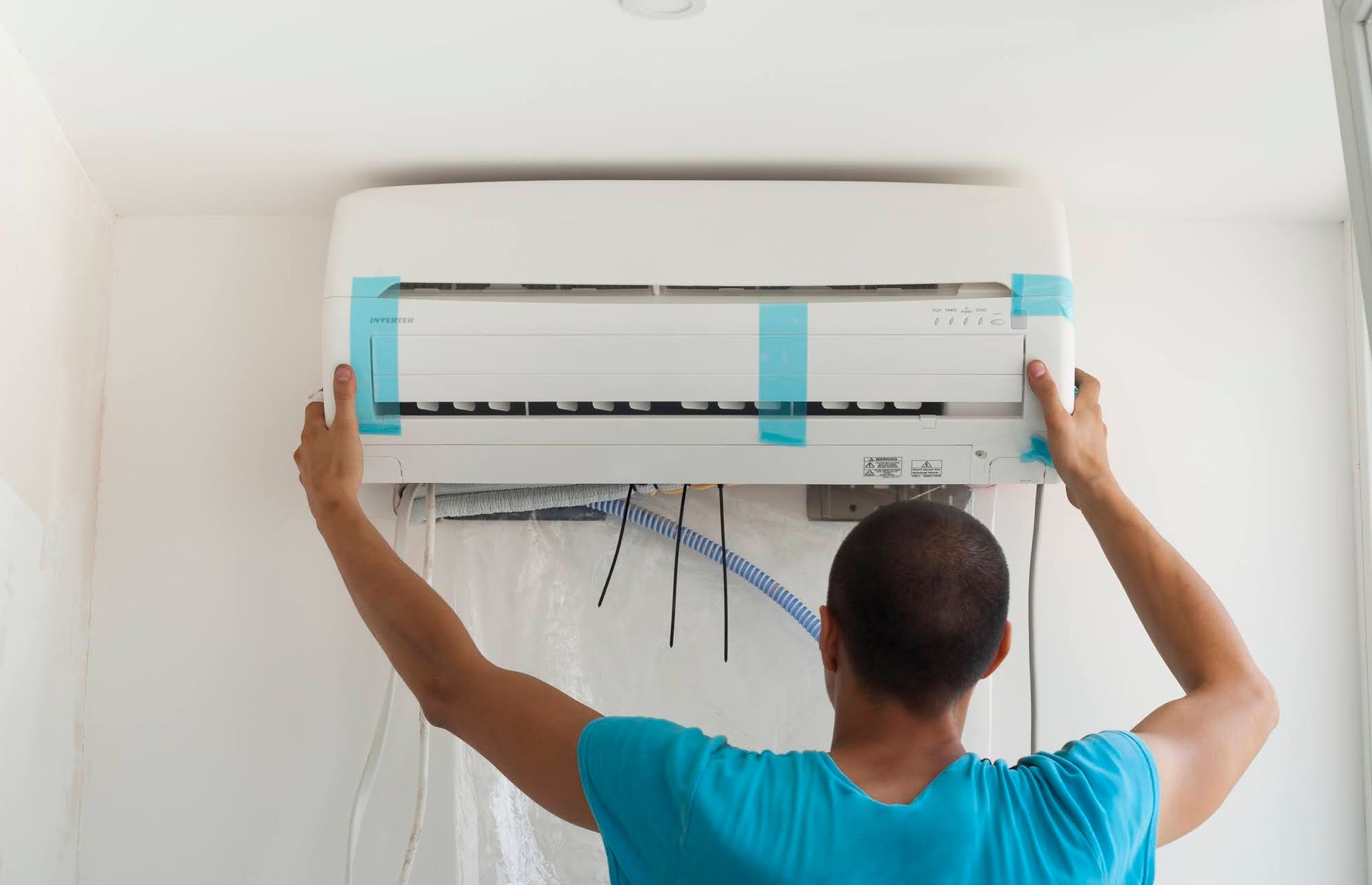Serving The Wasatch Front Area

Mold and Air Conditioning: Questions and Answers
August 9, 2023
Air conditioning can make life safer, healthier, and more comfortable—especially during a brutal Utah summer. Under the right circumstances, this technology can even dehumidify your household air to reduce mold growth. Unfortunately, a moldy air conditioner can make your quality of life worse instead of better.
A basic understanding of the relationship between air conditioning and mold—from air conditioning’s role in controlling moisture to the problems that can occur when mold takes over your system—can help you recognize and respond to the issue more effectively. Check out the following questions and answers on the subject.
How Does Air Conditioning Fight Household Mold Growth?
Mold thrives in damp or humid environments. A central air conditioning system can help prevent household mold growth by drawing moisture out of the air. It achieves this feat by blowing the warm, moist air over refrigerated evaporator coils. The coils chill the air, forcing the water in it to condense and fall into a drain pan.
If your home tends to develop mold problems, consider whether you run your conditioner as often as you should. The more constant your air conditioner’s operation, the less water vapor can hang in the air or collect on surfaces, which in turn should result in less mold growth.
When Does Mold Infiltrate Air Conditioning Systems?
Even as your air conditioner works tirelessly to dehumidify your air and lower your mold risk, it can grow mold inside its components under certain conditions. For instance, dirt that clogs coils or vents can make internal airflow sluggish, permitting condensation to collect on them. This moisture may then grow mold.
Unwanted moisture can also enter your air conditioner through a leak or other vulnerability somewhere in the system. Poorly insulated coolant lines, a clog in the line that directs condensation out of the drain pain, incompletely sealed ducts, and AC filters that don’t fit properly can all provide prime conditions for mold growth.
Why Should You Address Air Conditioner Mold Problems?
Whether your mold problem stems from internal mold growth or inadequate cooling performance, you should take steps to diagnose and resolve the issue sooner rather than later. According to the Centers for Disease Control and Prevention, airborne mold can cause allergic reactions, asthma attacks, and other health problems.
Even if you and your family show no signs of mold sensitivity, you probably won’t want to live with the mold’s musty, pungent odor. Additionally, airborne mold spores that land on porous surfaces or wooden beams can rot these structures, potentially doing serious damage to your home.
Your eyes may notice a mold infestation before your nose does. Look for green, brown, or back stains around your air conditioning vents. If you see mold in these areas, schedule an evaluation from your air conditioning services provider.
How Do Air Conditioning Technicians Address Mold Problems?
Experienced air conditioning technicians can check your air conditioning system to pinpoint a leak, clog, or other underlying cause of mold growth. In some cases, they can replace an individual component tainted by mold. More severe infiltrations may call for replacement of the entire system or professional mold remediation.
Your air conditioning technician may recommend some smart measures to improve your household moisture control. For example, if your system simply cannot extract enough moisture from the air even under constant operation, you may benefit from a different model and/or the addition of a dehumidifier.
If you can smell or feel the telltale signs of mold trouble and you suspect your air conditioning system as the culprit, seek help from Comfort Solutions. Our technicians can inspect the system’s various components, recommend solutions, and even replace moldy units with clean new ones. Contact us today to schedule our services.
Recent News

When to Upgrade Your AC Systems: Benefits & More
February 25, 2025

Why Remote Workers Should Upgrade Their HVAC
February 10, 2025

Common Home Heating, Furnace Repair & Replacement Myths
February 7, 2025

Keep Your Fireplace and HVAC Systems Running Strong All Winter
December 6, 2024

Your Comprehensive Heating Guide: Installation, Repair, Efficiency & More
September 18, 2024

HVAC System Replacements: How to Act Fast and Get it Done Right
September 17, 2024

